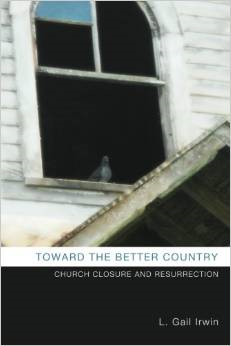 Every now and then on the roller coaster of ministry, I read an article like this one and think, “Maybe there is hope for the church after all!” This article, from the wonderful Faith and Leadership website (Duke University) tells the story of a church that has found an entirely new way to be the church. Instead of helping people by providing for their needs, this church is striving to build “social capital” by inviting people to identify their assets and network with others to make use of them. “Roving listeners” walk the neighborhood seeking out the gifts people have to share through networking and community organizing.
Every now and then on the roller coaster of ministry, I read an article like this one and think, “Maybe there is hope for the church after all!” This article, from the wonderful Faith and Leadership website (Duke University) tells the story of a church that has found an entirely new way to be the church. Instead of helping people by providing for their needs, this church is striving to build “social capital” by inviting people to identify their assets and network with others to make use of them. “Roving listeners” walk the neighborhood seeking out the gifts people have to share through networking and community organizing.
It could be argued that this church is no longer doing what churches historically do (think: the Six Great Ends of the Church in Presbyterianism). Not everyone goes there to worship God or study the bible. Some are there to use the kitchen for catering start-ups! But the building still houses a worshiping community (in fact, a growing one), while generating community cohesion for people outside their membership.
In fact, it could also be argued that this church is doing what churches have always done: providing “glue” for the neighborhood; a place people come to stick together and strengthen their community life.
The church’s pastor was inspired by the concept of asset-based community organizing written about by John McKnight and his colleagues at Northwestern University’s School of Education and Social policy. McKnight’s book, “Building Communities from the Inside Out” is now twenty years old. But the concept is still ground-breaking for churches. McKnight says that positive change requires learning to see the community as a glass that is “half full” instead of “half empty”. He writes:
If you’re a neighborhood organizer, you have to start with the belief that the people here have capacities and abilities and that if they come together in a community organization, they can be powerful.
His ideas, which have been applied to urban neighborhoods, could just as easily apply to us in our churches. Instead of focusing on our problems and asking “SuperPastors” to fix them, a congregation might instead take an inventory of its spiritual and material assets, and then organize those into new ministry ventures.
It would be fun to team up with a church that was open to an approach like this. Instead of talking about how to prop up what we’re already doing that doesn’t work very well, or obsessing about what we have lost, we could look around and ask, “What gifts has God put in this place?” and then…”What does God want us to do with those gifts? Maybe it’s something different than what we are doing now!”
If you’ve ever tried something like this in a congregation, write to me about it! As for me, I’ve ordered a copy of McKnight’s book. Twenty years late!


